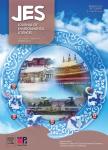Photochemical properties and source of pollutants during continuous pollution episodes in Beijing, October, 2011
Photochemical properties and source of pollutants during continuous pollution episodes in Beijing, October, 2011作者机构:State Key Laboratory of Environmental Criteria Risk Assessment Chinese Research Academy of Environmental Sciences South China Institute of Environmental SciencesMinistry of Environmental Protection
出 版 物:《Journal of Environmental Sciences》 (环境科学学报(英文版))
年 卷 期:2014年第26卷第1期
页 面:44-53页
核心收录:
学科分类:083002[工学-环境工程] 0830[工学-环境科学与工程(可授工学、理学、农学学位)] 07[理学] 08[工学] 09[农学] 0903[农学-农业资源与环境] 0713[理学-生态学]
基 金:supported by the National Natural Scientific Foundation of China(No.41005065,41375132) the National Department Public Benefit Research Foundation(No.201409003,201009001,201309011) Strategic Priority Research Program of the Chinese Academy of Sciences(No.XDB05030400)
主 题:Beijing particulate matter single particles photochemical property pollution episodes
摘 要:Beijing suffered from serious air pollution in October, 2011 with the occurrence of three continuous episodes. Here we analyze the pollution status of particulate matter, the relationship between the gaseous pollutants, physical and chemical properties of single particles, and the profile of water-soluble ions in PM2.5 during the three episodes. Regional and photochemically aged air masses, which were characterized as having high values of O3 and SO2, were hypothesized to have played a dominant role in the first episode. After mixing local air masses with freshly-emitted primary pollutants, the concentration of NOx continued to increase and the size of SO42-, NO3- and NH4+ in the particle population continued to become smaller. The amount of elemental carbon-rich and organic carbonrich particles in the scaled single particles (0.2-2 μm) and water-soluble K+ in PM2.s also increased in the episodes. All the available information suggests that the biomass or fuel burning sources in or around Beijing may have had a huge impact on the last two episodes.



